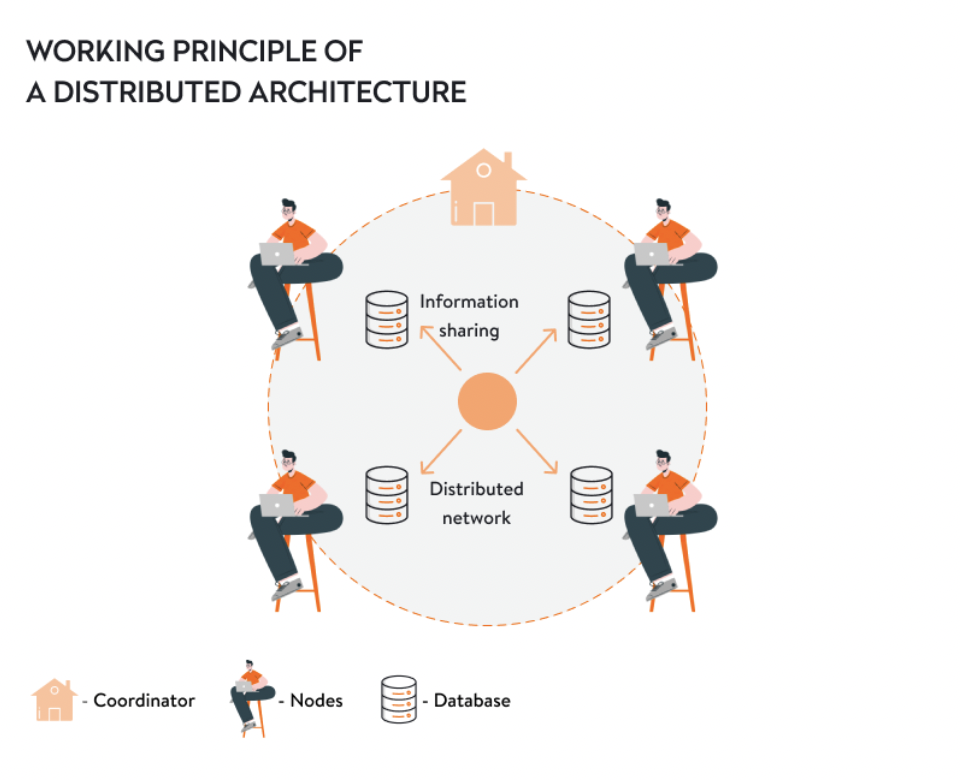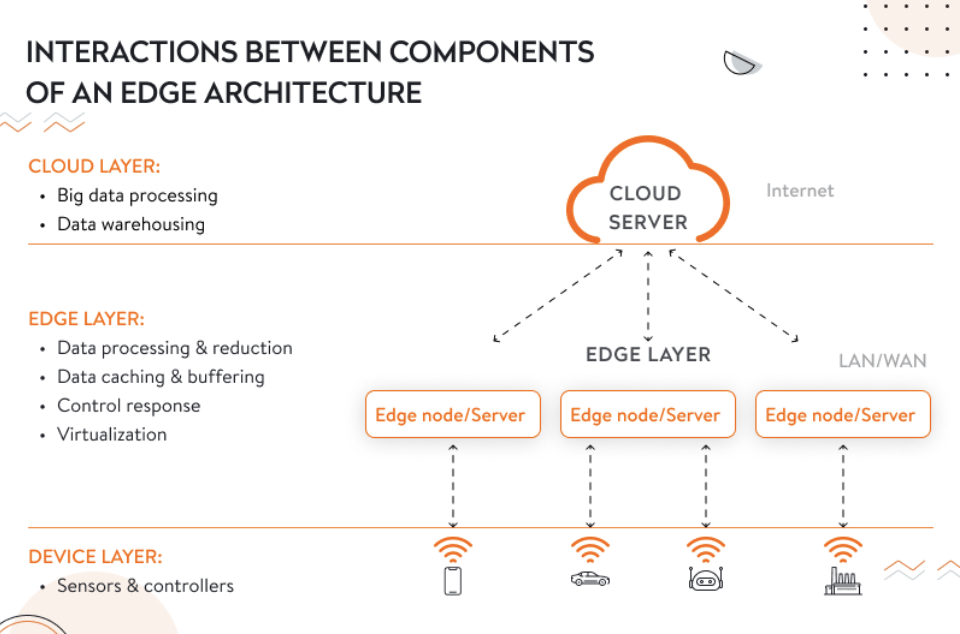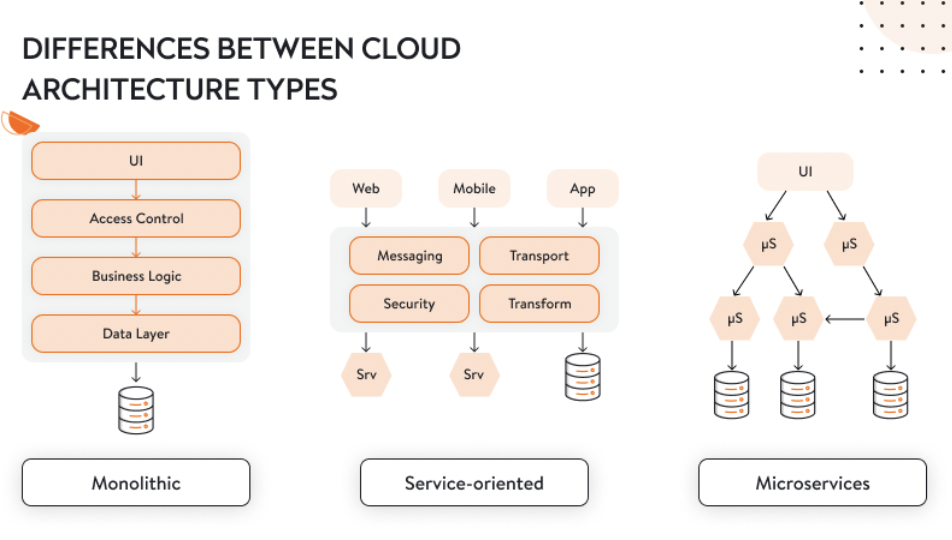Edge vs Cloud vs On-Premises: Choosing the Right Model for your Solution

Edge vs Cloud vs On-Premises: Choosing the Right Model for your Solution
While cloud computing and edge computing have been taking up a lot of space in the world of IT models, on-premises solutions also remain in-use. What drives decision-makers to select one model over the other, here we share unique perks and use cases of each.
For a business, it’s crucial to define the deployment model so a software solution’s future isn’t limited to a few years. Sometimes, businesses set too ambitious of goals and fail, as GE did in 2011. They attempted to get into the IoT world with their own IoT platform while making a huge change to their business model.
The main reason for their failure was that GE didn’t consider all the risks, complexities, specifics, and needs of the industries they decided to enter with their platform. Most crucially, GE miscalculated the capability of its business and neglected to adjust the project to reflect the company’s existing and upcoming operations.
In this article, we talk about making wise decisions regarding the technological operation of your business. Specifically, we consider three popular types of solution delivery: edge, cloud, and on-premises. We review each type’s distinctive use cases to determine which technology is ideal for your solution and its future.
Looking for help choosing between cloud and on-premises? Connect with an IT services firm or consultant to take action.
How Does Edge Computing Work?
The edge computing market is growing by leaps and bounds: Precedence Research predicts that by 2030, the global edge computing market will surpass $116.5 billion.
Edge computing isn’t a new concept; however, its growing popularity is based on another closely related technology – the Internet of Things. Essentially, edge computing offers a more advanced way of working with devices and data than IoT does, solving some of its imperfections.
What’s the Difference Between Edge Computing and IoT?
Edge computing introduces the concept of edge device-based data accumulation and processing. In simple words, edge computing presumes:
- Data processing takes place in close proximity to a device
- Automated decision-making based on analyzed data
Decision-making may include sending alerts, initiating specific actions, displaying information, and more.
IoT, in turn, only gathers and transmits data to cloud-based processing centers, and decisions are made in the cloud.
At this point, the working principle of edge computing seems relatively easy. However, it is only if you approach it wisely. You have to take care of two important aspects in terms of implementing edge computing: the architecture and the technology stack.
What Does an Edge Computing Architecture Look Like?
Edge computing requires a distributed application architecture (DAA), which enables users to interact with a device network through a single environment.

In a nutshell, the main components of an edge architecture are:
- Edge devices that accumulate data
- Edge nodes (a server/gateway) that conduct edge computing (data processing)
- Cloud for data storage and big data analytics
To send collected data, edge devices can use the most suitable communication protocols for the locations in which they are installed:
- BLE
- 5G
- Ethernet
- NFC
- RFID
Below is what the edge computing process looks like on the cloud layer, edge layer, and device layer.

What’s the Best Technology Stack for Edge Computing?
One of the most suitable technologies for edge computing is Rust, a relatively new programming language that is taking over the market. Its most discussed advantages are speed (specifically compared to Python) and security.
In terms of edge computing, Rust provides a number of benefits such as:
- Easier code review, security audits, and more in comparison to Golang, C, or C++
- Faster task execution compared to Node.js and Java
- Absence of a runtime, making code written in Rust work faster than Python or Node.js
- A small memory footprint, which helps Rust work with not-so-powerful hardware
If you are considering edge computing, you should definitely pay attention to Rust. This language will help you build a stable and quick solution.
Edge Computing in Commercial Projects
Edge computing allows companies to extend their opportunities for remote data collection and analysis, service provision, and improving overall business productivity.
This is possible due to the distributed architecture and the ability of edge devices to rapidly work with data. Quicker delivery of data allows for quicker decision-making and responses to problems or deviations from normal equipment operation.
Edge computing can be used in agriculture, warehouse operations, retail, and other spheres. With AI or ML implemented, its advantage is even greater. Besides quick data processing, AI and ML might contribute to the automation of business processes and automated data-driven decision-making.
Edge Computing in Government Projects
Governments, specifically local authorities, can greatly benefit in the future from applying edge computing throughout cities. Edge computing might contribute to:
- Monitoring and controlling energy consumption
- Monitoring remote facilities and locations
- Controlling HVAC (heating, ventilation, and air conditioning) systems
- Managing traffic
- Contingency planning (especially for locations prone to natural disasters)
As you can see, edge computing is already used in various spheres. In the future, governments might use this technology to resolve the various problems we currently face.
Cloud Computing Changed How Software Works
Cloud computing refers to storing and processing data on cloud platforms. Cloud computing has literally changed the way software solutions operate today, allowing products to exist in a virtual environment. This allows all parties – business owners, developers, and end users – to achieve maximum flexibility in delivering the solution to the audience, developing it, and using it.
Cross-device access to services via the internet has not only made software solutions highly available but has also allowed for:
- Low maintenance
- Easier infrastructure setup
- Easier scalability
- Reasonable expenditures
This is why cloud computing is popular among many organizations. According to Statista, annual spending on cloud IT infrastructure is expected to reach $133.7 billion by 2026.
Although the advantages mentioned make cloud computing look tempting, you still have to think about the technical background of your solution to make all of those advantages work for you.
Which Types of Architectures are Common for Cloud Computing?
When discussing the best architecture for cloud solutions, three options are usually brought up:
- A monolithic architecture is a suitable option for a small solution that doesn’t need to be greatly scaled in the future, as doing so would require drastic redevelopment. A monolithic architecture has a lot of dependencies, and all services work as a single unit, with no flexibility.
- A microservices architecture implies communication between microservices that are responsible for specific functionality. These microservices are linked by APIs, which allows for more independence during development, enhancement, and support. Changes made to one microservice won’t affect others if they aren’t in a close functional connection. However, network degradation between microservices can affect their overall operation.
- A service-oriented architecture (SOA) uses an enterprise service bus (ESB) to ensure simple and fast connectivity between services. However, it has the disadvantage of being less independent than APIs. If one ESB connection starts working slower, it affects the work of all services.

All of these architecture types have their own technological specifics for delivering a solution. Your choice should depend on your solution’s scalability needs and capabilities.
Suitable Technology Stack for Cloud Computing
The choice of technology stack is as important as the choice of architecture; it influences many aspects of a solution’s operation: security, stability, and speed. The most popular programming languages for cloud computing are Python, Golang, Java, and .NET.
These programming languages allow for the creation of solutions for multiple industries. Everyone is well aware of cloud-based commercial solutions such as Gmail, HubSpot, DropBox, and Adobe Experience Cloud.
While it’s understandable why commercial enterprises benefit from cloud computing, can the government sector also do so?
How Governments Benefit from Cloud Computing
According to the Asian Development Bank, a number of countries have already adopted cloud computing in various spheres. By doing this, some have achieved the following:
- Cost reductions. The Land Transport Authority of Singapore saved 60% on technology operations thanks to cloud infrastructure.
- Efficiency improvements. The Department for Communities and Social Inclusion in South Australia reduced the time for processing payments for non-governmental organizations from 4 to 5 weeks to less than 3 days with the help of cloud computing.
- Scalability and agility of public services. The Ministry of Education in the People’s Republic of China enabled millions of students to study online via a national cloud-based educational platform during COVID-19 lockdowns.
Undoubtedly, cloud computing can improve the way government institutions operate and even save resources.
Edge Computing vs Cloud Computing: What to Use and When to Use it
There are cases when a company has to decide between cloud and edge computing, especially if the business is dependent on sensors or other types of devices. In this case, it’s imperative to answer two questions:
1. How quickly do you want the data to be processed and ready for use?
Edge computing will ensure much faster data processing, and processing centers will present only meaningful insights. Cloud computing needs more time to accumulate and process data, especially if devices are located in hard-to-reach places. However, interaction with the cloud is inevitable, even in the case of edge computing. Cloud services store data gathered from edge devices and analyze large data sets.

As it's seen, with edge computing, data from edge devices goes a shorter way to the point where it's processed and analyzed. This way, edge computing enables quicker data analysis and, consequently, decision-making.
2. How much are you willing to spend?
If your ultimate goal is continuous business expansion, you will eventually face the need to scale existing resources to cover all business needs. Edge computing is an affordable technology; however, the more machines you’re going to use and the more powerful they should be, the more you’re going to pay for them in the future. In this case, scaling cloud resources might cost you less. Deloitte states that spending on edge hardware will increase by 22% in 2023.
Yalantis' senior architect and subject matter expert, Oleksii Hlushenko, shares his opinion on which technology – cloud or edge – might be better for your solution and business:
"Whether cloud computing or edge computing is better depends on your goals. There is no universal solution; if there were, everybody would use it. Edge computing is only a continuation of the cloud, which helps to make the cloud closer to the client. However, the closer the edge is, the more infrastructure issues you will have to solve. The same goes for security. The bigger your edge network is, the more components will affect the system’s security, and the more efforts your company will have to make to support a high level of security.
I would recommend using edge computing only when network limits between the cloud and clients become a problem. Cloud computing is more suitable when the simplicity of the solution and the ability to meet customers’ demands are more important than the speed of the system’s response."
Edge computing and cloud computing are rather modern technologies. However, there are also good old on-premises solutions. Are they still applicable?
On-Premises Solutions: Why they Still Work
With on-premises solutions, a company keeps its components, such as data centers and servers, in-house. As well, solution deployment, maintenance, and support are conducted locally. This brings with it the following disadvantages:
- High maintenance costs. Considering the need to maintain physical infrastructure, on-premises solutions are rather expensive. As soon as there’s a need to ensure better performance in proportion to increasing loads, you have to purchase more physical servers.
- Bigger IT department. Physical infrastructure maintenance requires more employees and a more complex way of dealing with servers than cloud infrastructure requires.
These two disadvantages also apply to edge computing.
However, a major advantage of on-premises solutions is security, as sensitive and private data is kept in-house. Сloud solutions can’t boast high-level security unless a company works with a reliable and proven vendor. That’s why on-premises solutions are a necessary means of running a business in such highly regulated industries as healthcare, insurance, and banking.
It’s worth mentioning that there is also an opportunity to use a hybrid model, i.e. solutions that operate both in the cloud and on-premises. In this case, applications that don’t contain sensitive data are run in the cloud.
Cloud Solutions vs On-Premises Solutions: Which to Choose?
Cloud solutions are better for companies oriented towards scalability, smooth performance, and location independence. On-premises solutions will always lack the flexibility and scalability the cloud can provide. Still, this model is for industries with strict data safety requirements.
Oleksii Hlushenko, Yalantis' subject matter expert, gives more detail as to when you should consider on-premises:
"If you have a strong need for expensive hardware that is dependent on proximity to computational modules (for instance, to achieve a short feedback cycle or low latency) and will be used for a substantial amount of time, then, from a long-term perspective, it’s more cost-effective to buy the hardware and use it in-house. In other words, if you demand highly specialized hardware, then on-premises might be either more practical or the only possible option."
Think Long-Term When Choosing a Delivery Model
Which solution is better – cloud, edge, or on-premises – depends not solely on their advantages and disadvantages. You also have to consider all your business needs and prospects. Think of where your business will bring you in five or ten years, how your needs might change, and how to cover them.
However, choosing who you will build your solution is equally important. When choosing a software engineering company, pay attention to a company’s experience, expertise, and engagement. High-level professionals won’t only follow your vision; they will supplement it with additional solutions and advise you on how to make your software exceed expectations.
The Manifest can help you choose an IT services company to execute your ideal delivery model.
